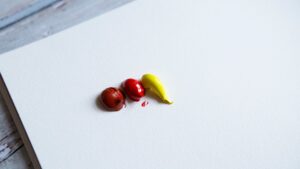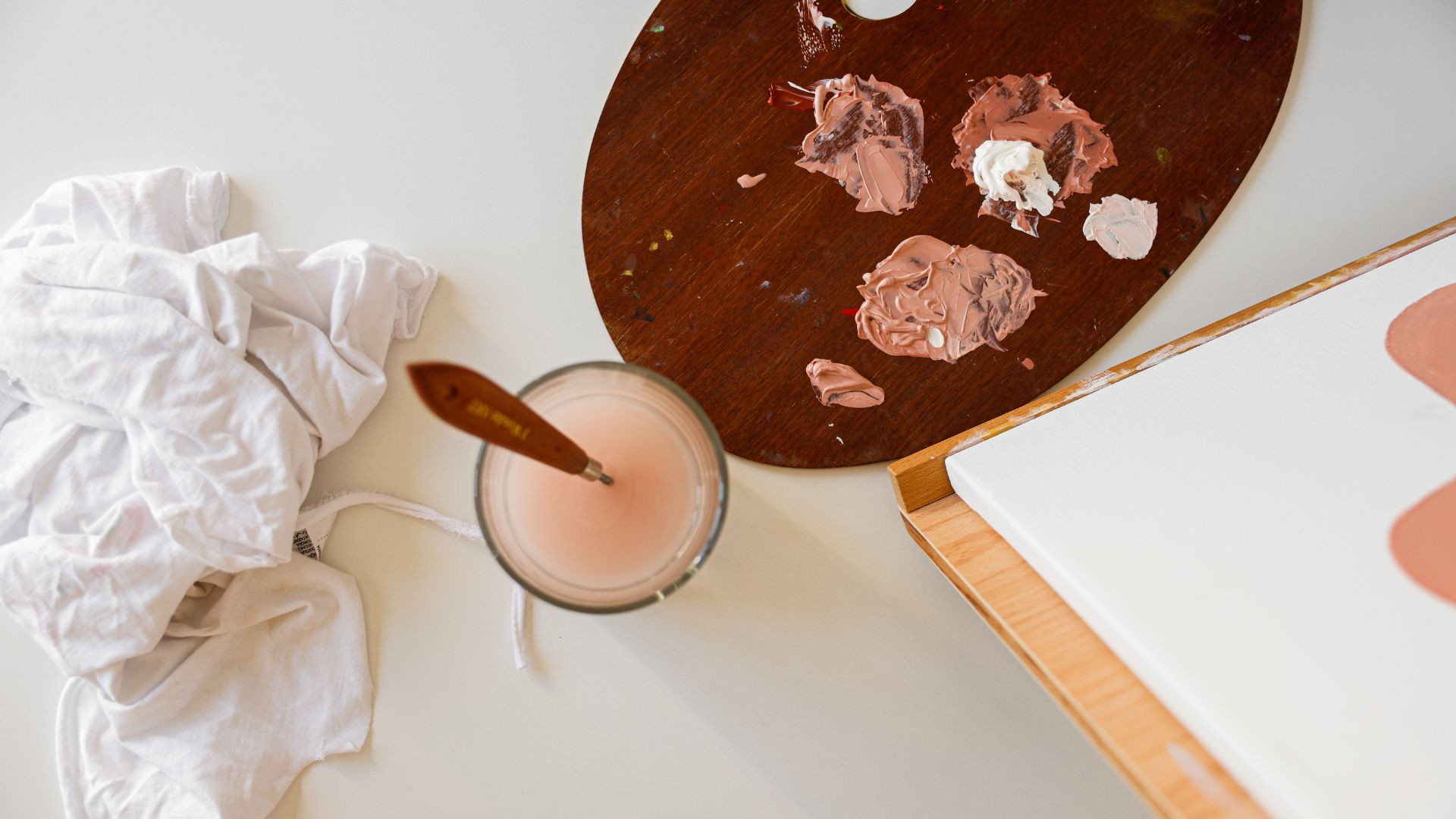When it comes to creating art, the canvas is your playground, and experimenting with different paints can lead to intriguing results. One common query among artists is whether wall paint, typically used for interiors, can be blended with other types of paint for canvas work. Let’s delve into this artistic adventure.
Understanding Wall Paint
Wall paint, often acrylic or latex-based, is designed for surfaces like drywall, wood, or plaster. Its purpose is to provide coverage and durability in different environmental conditions. However, using it on canvas might pose a few challenges due to its thicker consistency and specific properties meant for wall application.
Blending Wall Paint with Acrylics or Oils
Mixing wall paint with acrylics or oils can offer an intriguing fusion of textures and colors. Acrylic paints, known for their versatility and quick drying time, can be compatible with certain types of wall paint. However, it’s essential to consider the ingredients in the wall paint as some may contain additives or chemicals unsuitable for traditional art surfaces.

Things to Consider
Before experimenting, here are a few factors to keep in mind:
- Compatibility: Check the compatibility of the wall paint with other paint types by conducting a small-scale test on a spare canvas or surface.
- Consistency: Wall paint tends to be thicker than artist-grade acrylics or oils. Adjusting the consistency by adding mediums or thinners might be necessary for smoother application.
- Durability: Wall paints are formulated for durability and might not retain their quality on canvas over time. Consider this when creating long-lasting artworks.
Safety Precautions
Always prioritize safety:
- Ventilation: Ensure proper ventilation when working with any type of paint.
- Skin Contact: Avoid prolonged skin contact and use gloves when handling paints.
- Toxicity: Some wall paints may contain harmful chemicals. Read labels and take necessary precautions.
Experimentation and Creativity
Art is about exploration and creativity! While mixing wall paint with other paints for canvas work can yield interesting textures and effects, it’s crucial to test and explore gradually. Embrace the unpredictability and enjoy the artistic journey.
External Resources for Further Exploration:
- Golden Paints – Offers insights into various paint mediums and their compatibility.
- Blick Art Materials – Provides a range of paints and mediums suitable for different artistic endeavors.
- The Spruce – Explores the art of mixing paints and their compatibility.
Remember, art knows no boundaries, and mixing paints can unlock endless creative possibilities.
Tips for Experimenting with Mixed Paints on Canvas
Now that we’ve explored the potential of mixing wall paint with other types for canvas art, let’s dive deeper into some actionable tips to make your experimentation smoother and more rewarding.
1. Preparation is Key
Before you start blending paints:
- Surface Prep: Ensure your canvas is primed for optimal paint adhesion.
- Test Swatches: Create small test swatches to gauge how different paints interact.
2. Understanding Ratios
Experiment with different ratios:
- Start Small: Begin with small amounts to understand how each paint type influences the mixture.
- Maintain Records: Keep track of the ratios used for future reference.
3. Exploring Mediums
Consider incorporating mediums:
- Texture Gels: Add texture gels or pastes to alter the consistency and create interesting textures.
- Flow Improvers: Use flow improvers to enhance the flow of thicker paints.
4. Layering and Techniques
Embrace layering and techniques:
- Layering: Experiment with layering different paint mixes to create depth and complexity.
- Techniques: Try various brush strokes, palette knife techniques, or even pouring methods for diverse effects.
5. Observation and Patience
Observe and be patient:
- Drying Time: Different paints have varied drying times. Allow layers to dry thoroughly before adding more.
- Observation: Observe how the mixed paints interact as they dry to understand their final appearance.
6. Document and Learn
Keep a record of your experiments:
- Journaling: Maintain a journal documenting your mixes, observations, and outcomes.
- Learn from Mistakes: Embrace mistakes as part of the learning process and a source of new discoveries.
Conclusion: Unleash Your Creativity!
The beauty of art lies in the freedom to explore and innovate. Mixing wall paint with other types for canvas art opens doors to uncharted artistic territories. Remember, there are no strict rules in art—only possibilities waiting to be explored!
By embracing experimentation, learning from the process, and nurturing your creativity, you’ll unlock a realm of unique textures, colors, and visual narratives on your canvas.
External Links for Further Inspiration:
- Winsor & Newton – Offers insights into different paint types and their characteristics.
- Jerry’s Artarama – Provides a wide array of art supplies and mediums for artistic experimentation.
- Craftsy – Explores various mixed-media techniques and art projects for inspiration.
Dive into this artistic adventure with an open mind and a heart full of creativity. Let your canvas become a playground where imagination meets color, texture, and endless possibilities
Comparison tabular
| Characteristics | Wall Paint | Acrylic Paint | Oil Paint |
|---|---|---|---|
| Base | Usually acrylic or latex | Acrylic polymer emulsion | Linseed oil or other natural oils |
| Consistency | Typically thicker for wall surfaces | Medium consistency, can be thinned | Thick consistency, slow-drying |
| Drying Time | Quick drying | Quick drying | Slow drying |
| Color Vibrancy | May have limited color range | Bright, vibrant colors | Rich, deep colors |
| Blendability | Limited blending capacity | Easily blendable | Blendable, great for glazing |
| Durability | Durable for wall surfaces | Durable with proper sealing | Long-lasting with slower drying |
| Surface Adhesion | Designed for specific surfaces | Adheres well to various surfaces | Adheres well but may need special priming |
| Toxicity | May contain harmful chemicals | Generally non-toxic when dry | Generally non-toxic but solvents can be harmful |
| Suitability for Canvas | May require adjustments for canvas | Ideal for canvas art | Ideal for canvas art, may need drying time between layers |
This breakdown highlights the distinct properties of each paint type, emphasizing their strengths and considerations when used for canvas art. Remember, while experimenting with different paints can yield fascinating results, safety precautions and proper testing are essential for successful artistic endeavors.
Wrapping up
Experimentation in art is a thrilling journey where creativity knows no bounds. While blending wall paint with other paint types for canvas work opens doors to new possibilities, it’s essential to tread with curiosity, caution, and a spirit of adventure.
The canvas becomes your playground, a realm where colors merge, textures dance, and imagination takes flight. Embrace the unpredictability, learn from each stroke, and relish the beauty of your artistic discoveries.
Whether you’re a seasoned artist or an enthusiastic beginner, mixing paints is a canvas adventure waiting to unfold. So, gather your brushes, blend your colors, and let your creativity paint the stories your heart whispers.
May your canvas reflect not just colors but the vibrant essence of your artistic spirit. Happy painting.

For over a decade, I’ve been Mike, an artist, crafter, and designer deeply immersed in the Croc world. I thrive on crafting unique, size-inclusive patterns, fostering creativity, and sharing them on ktforum.com. My designs aim to ignite your creative spark and delight you, ensuring clarity and ease of use through rigorous testing. Join me in expressing your creative flair and showcasing your craft with joy.
Related Posts
- Exploring Alternatives to Wall Paint for Canvas Art
When it comes to creating stunning canvas art, wall paint isn't the only option in…
- Exploring the Cost of Wall Paint for Canvas Art: A Comparative Analysis
When diving into the world of painting, choosing the right type of paint can significantly…
- Exploring Temporary Art with Wall Paint on Canvas
When it comes to art, experimentation knows no bounds. Have you ever considered using wall…
- Preserving Your Canvas Art: Understanding Wall Paint and Fading
Painting on canvas offers a beautiful, expressive way to create art. But when it comes…

